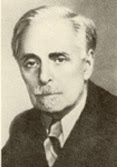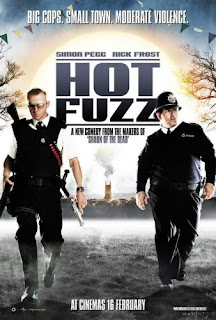Sin City Trailer Analysis
• The trailer begins, like the other trailers, with a distribution logo ‘Dimension Films’ and ‘Troublemaker Studios’. Troublemaker being relevant as founded by Robert Rodriguez and also director of Sin City.
• This leads to a cartoon image of one of the characters with the name ‘‘Marv’’. The picture is in black and white, following on to the same image of the real character which also has a black and white contrast too. The black and white imagery may reflect the idea of shadows, giving an eerie sense. The man is lighting a cigarette, which is conventional of how crime characters are portrayed. Additionally, the cartoon images may suggest an unrealistic edge to the film, this can relate to Baudrillard’s theory of simulacrum, where reality is blurred. The cartoon imagery is intertextual to the orientation of Frank Miller’s series of comics, and may also reference back to the poster where the characters are in squares, creating a comic like image where the stories lead on to one another.

• As the trailer builds up there is a non-diegetic, mysterious and slow music which also sounds action based. There are a few banging sounds which can connote guns.
• The shot of Marv dissolves to an image of a woman, where there is colour illustrated.
• There is then a quick, long shot of two police cars; the shot doesn’t look real, almost as though it’s a cartoon reflecting back to the narrative being unrealistic. The cars are outside, where we realise that it is night, this can connote crime as depicted in the dark so nobody can witness.
• There is then a flash to the ’Marv’ character, who is in a dark room, next to bright red bedding, he is looking at a character laying on a heart shaped bed , whilst holding her hand. As previously mentioned, the two colours of black and the red are iconographic of death.
• This is followed by an establishing/ crane shot of police-men running up some stairs, we get an insight into the character as we realise that he is a fugitive. Marv blows the police up, leaving the audience inquisitive toward the narrative.
• The shot then fades to black, and we meet the next character.
• The introduction of the character again begins with a cartoon image and with the name ‘’Hartigan’’ on the screen.
• The character walks through the doors into a pub, where we see a female dancing, it flashes to the man where there is a close up of him looking mysterious as he looks around indicating the crime aspect again. Additionally there is a voice over saying ‘’We need to get out of here’’ suggesting this further. The voice over sounds echoed, which almost gives a scary feel as it can reflect being unaccompanied.
• Next there is a cut to an introduction of a fierce looking character, ‘Dwight’, which dissolves to a mid shot of a man holding a gun.
• The shot fades to black where we see another mid shot of a female character, where the background is misty, connoting an eerie sense. The character looks innocent as she is wearing crosses that stand out. The character is small compared to the majority of the shot indicating her innocence further.

• The dissolve transition may indicate that the separate stories interlink with one another.
• There is a mid shot of the dependent looking girl, which zooms in to her face as the woman says ‘’helpless little girl’’ signifying her vulnerability further. Additionally, she looks younger than most of the other characters being portrayed, signifying her purity in comparison to them.
• There is a close up shot of a sword, which indicates further the significance of the weapons to the story.
• There is the indication to the rain again, which is a common motif within the ‘Sin City’ products that I have analysed highlighting a suppressive feel to the atmosphere. We see Marv again, where the camera slowly pans up him. The camera then cuts to a character holding a gun, which then quickly cuts up him, perhaps indicating that he is a distorted figure within the film. The camera focuses on his face for a while, with him looking directly at the camera, giving him a fierce and dominant persona.
• There is then a shot of a car, where we see the people in it; it zooms in to one character that is cut up, suggesting violence again.
• Following this there is a long shot of a group of people and a character facing them. At this point the voice over says ‘’Sometimes I miss killing a whole lot of people’’. The character is pointing a gun at another character. The majority of people in the shot appear to be men; however the one he is aiming at is a woman, this may signify the idea of women being defenceless in comparison to men. This is indicated further as there is another man touching her, either protecting her or additionally violating her, building to the sense that women are supposedly more vulnerable.
• There is a change in scene to a shot of a character shooting a car. There is a slow pan, with an extreme close up of the gun, suggesting its fundamental role within the film.
• There are two indications of relationships within the story, which may suggest some form of hold back, or help with the other characters. This again links to Propp’s idea of the majority of narratives including a relationship, or a ‘’prize’’.

• There is then a line up of shots containing the actors and their name. The writing is a similar font to the ‘Sin City’ sign at the end of the trailer. The writing is red, and looks abraded; some of the letters look as though they are gun shots. The deformation effect to the writing suggests a portentous indication to the film.
• There is then a few action shots, one where there is a female character, who throws a weapon, she is wearing dark clothing and has a leg showing, suggesting that she may be a seductive figure, like a lot of the other women, in the trailer, are indicated to be.
• There is a cartoon version of two characters previously shown in the trailer accumulating to the reflections of Miller’s comics. Additionally there is an unrealistic shot of a character with a yellow substance on his hand.
• There is some more indication of crime, when there is a long shot of a police car and a character jumping through the window. The only colour in the shot, that doesn’t have a black and white effect, is red; this is suggested a lot through the trailer, being representative of blood.
• There are some more shots of actors within the film that may appeal to some people.

• The trailer penultimately finishes with a low shot of a character, where the camera is looking up at him; the atmosphere looks foggy around him, which may connote a forbidding persona.
• The trailer ends with a crane shot which pans around an illuminated city; the lighted buildings can suggest a range of people, highlighting the different stories. ‘Sin City’ transmutes from the city, with red lines down the screen, which looks like blood. The ‘Sin City’ title then turns to red and ‘Coming Soon’ emerges on the iconic raining background























